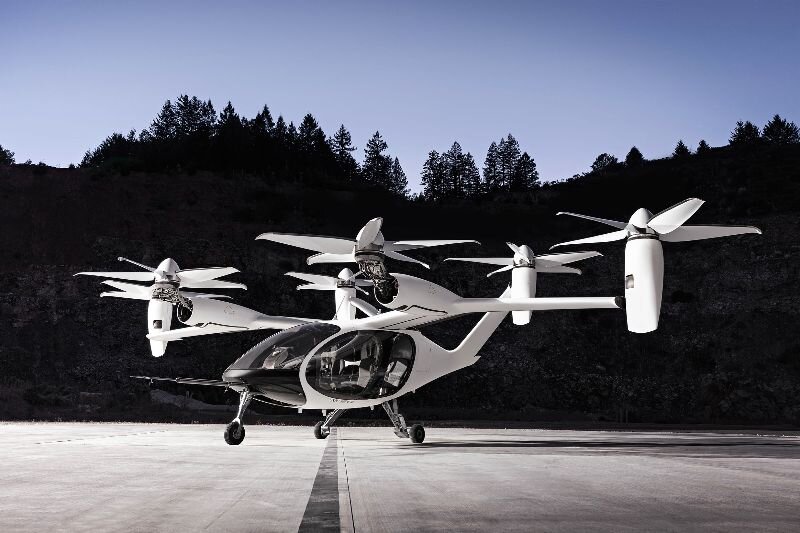Revolution.Aero Uplift: Unicorns, SPAC(-tacular) failures and tightropes

exc-60422b553f35b3501dbd35d1
To take a company public is no mean task. The scale of the challenge was revealed during yesterday’s Revolution.Aero Town Hall online meeting. Audited financial statements, the reporting regulations and the number of financial roadshows – to find backers – are exhausting.
But since 2020, there has been a new enthusiasm to go public via mergers with blank cheque companies or Special Purpose Acquisition Companies (SPACs). This is in part because of the ability to provide forward-looking statements rather than past ones.
Kirsten Bartok, managing partner, Air Finance and co-director of SPAC New Vista Acquisition Corp touched on the SPAC frenzy at Revolution.Aero’s Town Hall on autonomy (March 2nd). “People are significantly more interested since Covid-19. They feel like they lost out on Tesla or SpaceX when they were early and now, they want some exposure to emerging companies that are going to rapidly transform the landscape through technological evolution,” Bartok said.
Last year, the average SPAC investment was $334.8m for the 248 companies which went public through SPAC mergers. In the first two months of 2021 itself, there are already 207 announced, according to SPAC Insider.
What is interesting is that the size or present revenue of the company does not matter. Companies that are pre-revenue are equally eligible as ones that have started making money. Take the Joby Aviation and Archer Aviation SPAC mergers for example.
Joby will merge with Reinvent Technology Partners – co-founded by LinkedIn founder Reid Hoffman and Marc Pincus, founder of video game developer Zynga – to be valued at $6.6bn. While Archer is to merge with Atlas Crest Investment at a value of $3.8bn. Further, United Airlines has booked 200 Archer vehicles that will cost $1bn.
Although they announced SPACs in the same month, Joby and Archer and not at the same stage of development. Joby has been working on its vehicle for 10 years and hopes to build revenue before certification with $40m in contracts signed and another $120m in process.
Archer has not yet released real images or footage of its vehicle, while Joby CEO JoeBen Bevirt concluded the company’s SPAC announcement with the eVTOL taking off behind him. (Watch more footage of its first test flight here.)
It is important to remember that the popularity of SPACs is being driven predominantly by institutional investors. Bartok said only a small number were retail investors. “It is important for investors to remember that there is a possibility of losing your money, if things do not go well given the stage of the technologies.”
A Joby air taxi. Courtesy: Joby Aviation
Accelerate the ecosystem
Despite the finer points in each case, both the Joby and Archer deal will accelerate the ecosystem, Dean Donovan, MD, DiamondStream Partners, told Revolution.Aero.
“They will reduce funding risks for urban air mobility [UAM] concepts and that will help the vehicles get through certification and roll-out faster and more cheaply. Other players will face less risk in working with the UAM companies,” said Donovan.
In a recent Forbes article, he said all of the UAM deals announced so far will “move the world toward a more integrated mobility system where there will be aerial options for the last miles of travel, substitutes air travel for ground travel, and ultimately saves customers time and money”.
Former head of business development of Uber Elevate, Wyatt Smith, agreed. He told Revolution.Aero: “Recently announced SPAC deals bring game-changing liquidity to the advanced air mobility sector, de-risking efforts across advanced air mobility [AAM] supply chains and powering momentum in certification programs. It’s a hugely positive set of milestones for our industry.”
Late last year, Joby Aviation acquired Uber Elevate, the ridesharing air taxi business with a $75m investment from Uber.
Smith said: “As Joby assumes more go-to-market responsibilities, it will likely play a similar role to Uber Elevate in shaping an ecosystem vision. Many more opportunities will certainly emerge across the value chain.”
Donovan points out that both deals highlight a different focus in the AAM ecosystem: Ride sharing in the case of Joby and replacing last-mile car trips – aided by United and regional partner Mesa Airlines’s network – for business travel in the case of Archer.
Archer Aviation’s eVTOL concept Maker. Credits: Archer Aviation
Commercial carriers in the UAM space
It is no secret that commercial aviation took a hammer blow when the pandemic hit. The first five weeks of 2021 too have seen a 50.8% dip in global scheduled airline traffic compared with 2020 levels, according to latest WINGX data.
Donovan said: “Why wouldn’t an airline with a lot of premium traffic try to get a deal like United’s with a good UAM company?”
He said a carrier like United is well-placed to add UAM to its existing commercial travel network. In his article, he said Archer’s SPAC should create the confidence that enables airline partners to invest in the space.
“For example, United will need to invest behind educating customers, developing software to facilitate UAM bookings as an integral part of commercial aviation trips, and limiting UAM connections times at major airports by making appropriate terminal investments.”
But there are still many variables. He told Revolution.Aero: “The United deal may provide new sources of demand for UAM concepts, which could be helpful for market development. However, the cost of operation will ultimately determine demand.”
Donovan said the Archer SPAC merger is certainly not a standard public company deal.
Walking a tightrope
Bartok said any company going public needs to be large enough and have a total addressable market. Here, the question of revenues is key.
“Are you pre-revenue or early in revenue? What are you going to tell the public markets throughout this period until you are at revenue? It is a tightrope and you have to be as prepared and careful to go through that path. It also needs to be ready to be a public company – which means a very big corporate team, not just software or strategy.”
There is a lot of risk, as there is in every early-stage company, according to Donovan. He said the biggest risk is the potential volatility that Archer could face in public markets if it misses market expectations. “A set of negative surprises could make it hard to raise capital in the future.”
The Joby deal is innovative in this respect. “Its long lockups tied to share price should help stabilise the stock through any rough patches at the potential cost of market liquidity.”
Donovan said investors and companies must beware of disillusion following periods of exuberance. “If that happens, some big failures could lead to funding drying up for a period of time from capital markets for new aviation concepts. The converse is also true: some big successes could pave the way for additional capital flows.”
The SPAC wave is rising, higher and faster than ever before. In the time since it has taken to write this newsletter, two more SPAC IPOs were raised (205 to 207).
In the words of Donovan: “Not all of them can succeed — expect unicorns and spectacular failures.”








